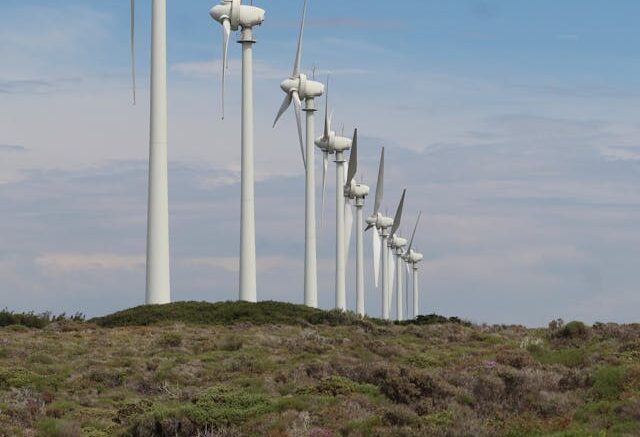Recent advancements in wind turbine technology, particularly in the UK, are driving forward innovation in the sector
One of the most exciting developments is the emergence of new turbine designs, such as vertical-axis wind turbines (VAWTs) and floating wind turbines. VAWTs, which capture wind from any direction, are particularly suited for urban environments and areas with turbulent winds.
Floating wind turbines, on the other hand, are mounted on floating platforms, allowing their deployment in deeper waters where winds are stronger and more consistent, opening up new areas for energy production. Some notable UK-based floating wind turbines include the Kincardine Offshore Wind Farm near Aberdeen and Hywind, the first floating wind farm in the world, constructed in 2009.
Advances in materials science are also playing a crucial role. The development of thermoplastic composite blades has made turbines lighter, stronger, and fully recyclable, addressing environmental concerns associated with traditional fibreglass blades. Additionally, the use of 3D printing in manufacturing allows for greater precision and less material waste, reducing production costs and enabling the customisation of turbine parts to suit specific environmental conditions.
To tackle the intermittency of wind energy, new storage solutions such as advanced battery systems are being developed to store excess energy for use during periods of low wind. Grid integration technologies are also evolving, with sophisticated software ensuring a stable and reliable power supply by balancing the flow of energy from wind farms to the grid in real-time.
Environmental and wildlife considerations are increasingly at the forefront of turbine design. Technologies such as acoustic deterrents are being developed to protect birds and bats, while turbine designs are being refined to minimise their impact on ecosystems. Some companies are even exploring biodegradable blade materials to further reduce the environmental footprint of wind energy.
As these technologies continue to advance, they are making wind energy more efficient, versatile, and sustainable.

Be the first to comment on "Looking at new advances in wind turbine technology"